White-tailed Deer Seeking Salt

Congratulations to Janine Norton, the first of many readers to correctly identify the truck “salt lick” being visited by White-tailed Deer! A real-life and humorous confirmation of the quest for salt on the part of White-tailed Deer in the spring comes in the form of tongue marks on the side of Nancy Howe Russell and Jim Russell’s salt-laden truck!
Almost all soils more than 25-50 miles from the seacoast are low in sodium. In addition, in spring and summer many of the plants White-tailed Deer consume have higher amounts of potassium and water in them which interferes with efficient sodium conversion, leaving deer with an increased need for sodium. Does are particularly vulnerable, as they need twice as much sodium as bucks this time of year due to reproduction demands.
Naturally Curious is supported by donations. If you choose to contribute, you may go to http://www.naturallycuriouswithmaryholland.wordpress.com and click on the yellow “donate” button.
White-tailed Deer Urine: Potentially Deleterious

There is certainly no shortage of White-tailed Deer urine where there are White-tailed Deer. Research shows that a typical deer releases about 64 ounces of urine per day in good weather conditions and 42 ounces in bad weather conditions, which comes to approximately 150 gallons per year.
White-tailed Deer often winter in areas (“deer yards”) with coniferous trees such as Eastern Hemlock, Northern White Cedar and Balsam Fir that provide shelter from the wind and prevent deep snow from accumulating. Researchers have found that the deer’s urine significantly influences the types of plants that grow in these yards, due to the nitrogen they excrete in their urine. It builds up in the soil and when spring arrives, the chemical acts like fertilizer, encouraging the growth of some nitrogen-loving plants, including hardwood seedlings. If this happens winter after winter, the conifer-filled deer yards can disappear, replaced by different types of trees that may not do as good of a job blocking wind or catching snow. (Smithsonian Magazine)
(NB: If you are truly naturally curious and sensory oriented, you might enjoy scooping up a handful of White-tailed Deer urine-soaked snow and taking a whiff. It (along with beaver castoreum) is one of my favorite wildlife scents. A sweet pine-like odor will cling to your mitten or glove for days.)
Naturally Curious is supported by donations. If you choose to contribute, you may go to http://www.naturallycuriouswithmaryholland.wordpress.com and click on the yellow “donate” button.
White-tailed Deer & Acorns

The pictured White-tailed Deer is eating acorns by moving its bottom mandible back and forth, crushing the acorns with its back molars and extracting the meat (see inset). Acorns are a crucial food source to deer – up to twenty-five percent of their autumn/early winter diet consists of these nuts.
Although acorns are low in protein content (6 percent), they’re high in carbohydrates (42 percent) and fats (52 percent). They are easily digested, their nutrients readily absorbed. Not all acorns are equally appealing to deer, however. They all contain a certain amount of tannic acid, which affects palatability. The level of tannins is lowest in White Oak acorns, making them the sweetest of all acorns; thus, they are a deer’s first choice.
Naturally Curious is supported by donations. If you choose to contribute, you may go to http://www.naturallycuriouswithmaryholland.wordpress.com and click on the yellow “donate” button.
White-tailed Deer Fawns Soon to Stretch Their Legs

Most White-tailed Deer fawns are now two to three weeks old. They have spent their short life lying in a sheltered spot called a form, often in a field, where their stillness and relative lack of scent makes it more difficult for predators to detect them. Their mother stays away, not wanting to contaminate the form with her scent. She visits them periodically so that they can nurse.
At this point in their lives, fawns can stand and walk, but aren’t quite strong enough to keep up with their mother, or run from predators. Should you come upon one, know that their mother is most likely within 100 yards, and the fawn shouldn’t be disturbed – it hasn’t been abandoned! Fawns continue nursing from their mother for the next three months, but are now beginning to eat vegetation. Very soon they will be accompanying their mother, foraging for food and relying on their dappled coat for camouflage.
Naturally Curious is supported by donations. If you choose to contribute, you may go to http://www.naturallycuriouswithmaryholland.wordpress.com and click on the yellow “donate” button.
Bobcat Caches & Revisits White-tailed Deer Carcass

Rabbits and hares comprise much of a Bobcat’s diet, but when prey is scarce or hard to capture, adult male and large adult female Bobcats will attack bedded, weak or injured White-tailed Deer. Bobcats often cache prey such as a deer that is too large to eat in one feeding. They scrape up leaves, bark, twigs, soil, snow — whatever is available — and cover their prey, returning soon to eat it. When feeding on a deer, Bobcats bite away the hair to avoid eating it, and this discarded hair is frequently mixed with the debris that the cat drags over the kill to cover it.
This photograph was taken 24 hours after the deer was cached, and the site has been visited by several predators. A characteristic sign of Bobcat feeding is the amount of hair strewn around the carcass and the lack of broken long bones (see inset). (Bobcats don’t have the strength to break large bones with their teeth.)(Cache discovered by Lynn & Otto Wurzburg, who observed the Bobcat leaving after caching the deer)
Naturally Curious is supported by donations. If you choose to contribute, you may go to http://www.naturallycuriouswithmaryholland.wordpress.com and click on the yellow “donate” button.
White-tailed Deer Bucks Shedding Antlers

White-tailed Deer antlers are typically shed in December or January. Once breeding has taken place, cells start to de-mineralize the bone between the pedicle (where the antler attaches to the deer’s skull) and antler, causing the antler’s connection with the skull to weaken — a flick of the deer’s head and one or both antlers go flying, ridding the deer of these heavy, cumbersome, bony appendages.
It’s a win-win situation for both deer and resident rodents, who scarf up these rich sources of calcium phosphate and protein almost as soon as they hit the ground. Take a close look at the tip of each tine in this photograph and you will see that something — most likely a vole, mouse, squirrel or porcupine — has been whittling away on it, and the antler’s probably only been on the ground for a matter of days or weeks at most. (Once a deer sheds its antlers, new growth starts immediately, though visible antler growth is often not apparent for several weeks.)
Naturally Curious is supported by donations. If you choose to contribute, you may go to http://www.naturallycuriouswithmaryholland.wordpress.com and click on the yellow “donate” button.
Buck Rubs: Bright Beacons Of Scent Communication and Visual Signals

As fall unfolds and the breeding season approaches for White-tailed Deer, testosterone increases in bucks, triggering the drying and shedding of velvet from their antlers. Bucks rub their antlers against shrubs and trees in order to remove the dried velvet, a process which is normally completed within 24 hours. Generally small-trunked, smooth-barked trees and shrubs ½ to 4 inches in diameter and without lower branches are preferred (Staghorn Sumac is often chosen, as depicted). Research shows on healthy habitat, rub densities can vary from a few hundred to nearly 4,000 rubs per square mile.
Rubs are far more than just a velvet-removal site, however. They serve as billboards posted for deer of both genders. Through specialized forehead skin glands, a buck deposits pheromones that convey social status, suppress the sex drives of younger bucks and stimulate does. Aggressive rubbing as well as increased testosterone strengthen neck and shoulder muscles, equipping them for battle with another buck should it vie for the same doe.
Naturally Curious is supported by donations. If you choose to contribute, you may go to http://www.naturallycuriouswithmaryholland.wordpress.com and click on the yellow “donate” button.
White-tailed Deer Fawn Survival

Both behaviorally and physically, White-tailed Deer fawns have adaptations that enhance their survival – they remain lying down and motionless for their first few weeks while their mother is off foraging and stir only when she returns periodically to nurse them. They are scentless for their first few days, and dappled coats enable them to be well camouflaged. Reduced heart rate and breathing when danger is nearby also increase their ability not to be noticed.
Even so, fawns have a low life expectancy. Once detected by a predator, they are very vulnerable. Black Bears and Coyotes, especially, are quick to take advantage of this easy meal. Proof of this can be found in the scat of these predators. (Inset photo: Black Bear scat containing the hair and bones of a fawn).
Naturally Curious is supported by donations. If you choose to contribute, you may go to http://www.naturallycuriouswithmaryholland.wordpress.com and click on the yellow “donate” button.
Acorns A Wildlife Magnet

Acorns are loaded with fats and carbohydrates, making them a perfect way for wildlife to put on pounds that will carry them over the winter. They are also easy to open and to digest, making them significant food items for more than 96 species of birds and mammals. Among the highest consumers are White-tailed Deer (acorns are 50% or more of fall and winter diet), Wild Turkeys (up to 38% of diet in winter and spring) and Black Bears.
The impact these nuts have on the species that depend on them as a significant portion of their diet is great: Squirrels, mice and jays store them in the fall and this supply is critical to their winter survival. The geographic distribution of many animals coincides with or depends on the range of oaks, and biologists have linked acorn crop failures to poor Black Bear reproduction and meager antler growth on White-tail bucks.
(Photo – Signs of two acorn hunters. Prior to hibernation, a Black Bear (tracks down center of image) has been looking for leftover acorns in a patch of forest floor that has been scratched up by White-tailed Deer feeding on acorns.)
Naturally Curious is supported by donations. If you choose to contribute, you may go to http://www.naturallycuriouswithmaryholland.wordpress.com and click on the yellow “donate” button.
Large-flowered Bellwort Flowering

Large-flowered Bellwort (Uvularia grandiflora), a member of the lily family, strikes one as a rather modest plant, hiding its six-parted flowers by hanging them face down towards the ground. This arrangement influenced Linnaeus when he was assigning this plant the generic name Uvularia, as he felt the pendant blossoms resembled a uvula, that lobe that hangs from the upper palate at the back of our throats!
Many insects are attracted to this plant’s pollen and nectar, particularly bumble bees and other types of bees. Ants distribute Large-flowered Bellwort seeds, attracted by the fatty elaiosomes attached to the them. And White-tailed Deer graze so heavily on this plant that you won’t find it in woods that are overpopulated with deer.
Naturally Curious is supported by donations. If you choose to contribute, you may go to http://www.naturallycuriouswithmaryholland.wordpress.com and click on the yellow “donate” button.
White-tailed Deer Molting

The signs of fall are plentiful – skeins of migrating geese, disappearing insects, falling leaves. Another transformation that takes place in the fall (as well as spring) with White-tailed Deer and other mammals is the molting of a summer coat and the growing in of a winter coat.
The thinner summer coat of a White-tailed Deer consists of shorter, reddish hair. The shorter length of the hair allows the deer’s body heat to easily escape and the light color reflects rather than retains warmth from the sun. Come fall, deer molt the rusty red hairs of summer, and replace them with a coat consisting of longer, darker hairs. This grayish-brown hair is warmer and absorbs more of the sun’s warmth. A spring molt occurs in reverse.
The process of molting happens relatively fast and is often completed within two to three weeks. During this period, deer can look a bit ragged (see photo), as both the red summer hairs as well as the brown winter hairs are evident. If you see a deer at this time, it’s easy to assume that such a deer has mange, but it is just the way a seasonal molt takes place. (Photo by Erin Donahue)
Naturally Curious is supported by donations. If you choose to contribute, you may go to http://www.naturallycuriouswithmaryholland.wordpress.com and click on the yellow “donate” button.
Velvet-covered Antlers Growing
 Male White-tailed Deer grow a new pair of antlers every year starting when they are one year old. The size of the antlers depends on the age of the deer, genetics, and diet. Before antlers actually appear, structures called pedicles that connect the antlers to the skull develop. Growth of the actual antlers begins in March or April and as more nutritious food becomes more available during May and June antlers grow more rapidly.
Male White-tailed Deer grow a new pair of antlers every year starting when they are one year old. The size of the antlers depends on the age of the deer, genetics, and diet. Before antlers actually appear, structures called pedicles that connect the antlers to the skull develop. Growth of the actual antlers begins in March or April and as more nutritious food becomes more available during May and June antlers grow more rapidly.
Antlers are one of the fastest growing bones that exist; growth is regulated by hormones which are controlled by the photoperiod, or length of day . Yearling antlers can grow about 1/8-inch a day during the summer, and adults as much as 1/4th of an inch. While they are growing, antlers are covered with a layer of tissue called “velvet” which is dense with blood vessels that carry nutrients to the antlers. In August the supply of blood to the velvet diminishes and the antlers begin to harden. By September the velvet has dried and is falling off. Antlers are used as weapons during rut, or the mating season, after which they fall to the ground, providing a valuable source of calcium and phosphorus for rodents. (Photo by Erin Donahue)
Naturally Curious is supported by donations. If you choose to contribute, you may go to http://www.naturallycuriouswithmaryholland.wordpress.com and click on the yellow “donate” button.
White-tailed Bucks Shedding Antlers
 White-tailed Deer bucks grow and shed a pair of antlers annually. The main purpose of these bony growths is to serve as weapons against rival bucks during rut, or mating season. During this time in the fall, prior to their 24-hour receptive period, does release chemicals to signal their readiness to bucks. These chemicals keep the bucks’ testosterone level high, which in turn keeps antlers firmly attached to their heads. Once rut is over, does stop emitting these chemicals, and as a consequence, the bucks’ testosterone level drops significantly.
White-tailed Deer bucks grow and shed a pair of antlers annually. The main purpose of these bony growths is to serve as weapons against rival bucks during rut, or mating season. During this time in the fall, prior to their 24-hour receptive period, does release chemicals to signal their readiness to bucks. These chemicals keep the bucks’ testosterone level high, which in turn keeps antlers firmly attached to their heads. Once rut is over, does stop emitting these chemicals, and as a consequence, the bucks’ testosterone level drops significantly.
When a buck’s testosterone level drops, it triggers cells called osteoclasts to become more active in the buck’s pedicles, the permanent bony bases which anchor the antlers to the buck’s skull. As a result, calcium is extracted from the pedicles which weakens the antlers’ connection to the buck’s skull, and eventually the antlers drop off.
It is rare that both antlers drop at the same time – usually there are four to eight days between the loss of the first and the second antler. I assumed that bucks needed to knock their antlers against something hard, such as the trunk of a tree, in order to get them to fall off. However, years ago I witnessed a buck shedding an antler simply by dropping his head and then quickly flicking it upwards, sending an antler flying through the air. (Note pedicle where antler used to be attached. Photo by Alfred Balch)
Naturally Curious is supported by donations. If you choose to contribute, you may go to http://www.naturallycuriouswithmaryholland.wordpress.com and click on the yellow “donate” button.
Coyotes Scavenging
 Coyote tracks from three different directions led to an area where a deer’s well-cleaned skull was the only remnant of a communal meal. It had been dug up from a spot nearby where it had been cached, and carried to a more protected area to work on. Coyotes are omnivores, but about 90% of their diet consists of mammals. Coyote scat I’ve examined has included, among other things, the hair of Muskrat, Snowshoe Hare, White-tailed Deer and small rodents as well as feathers, grass and apples.
Coyote tracks from three different directions led to an area where a deer’s well-cleaned skull was the only remnant of a communal meal. It had been dug up from a spot nearby where it had been cached, and carried to a more protected area to work on. Coyotes are omnivores, but about 90% of their diet consists of mammals. Coyote scat I’ve examined has included, among other things, the hair of Muskrat, Snowshoe Hare, White-tailed Deer and small rodents as well as feathers, grass and apples.
Coyotes are commonly blamed whenever there is a decline in the White-tailed Deer population. Studies involving the removal of deer populations in a given area have not found any evidence that Coyote removal caused an increase in the deer population, nor did it affect the overall deer population growth. The fact that Coyotes are not causing deer populations to decline can also be seen in the devastating effect White-tailed Deer are having on forest ecosystems throughout the eastern United States as the Coyote population increases.
That’s not to say Coyotes don’t hunt deer – they do, primarily in the spring (fawns) and in the winter, especially when there is enough snow and/or crust to slow deer down but not Coyotes. However, much of their venison consumption is a result of their scavenging deer carcasses, which they do any time of year. Examine Coyote scat and the chances are great you will find deer hair in it; chances are also great that it came from a carcass, not a living deer.
Naturally Curious is supported by donations. If you choose to contribute, you may go to http://www.naturallycuriouswithmaryholland.wordpress.com and click on the yellow “donate” button.
Bobcats Foraging
 Bobcats are active all winter, particularly at dawn and dusk, when their primary prey (hares and cottontails) are active. Mice and voles are also a significant part of their diet, and occasionally larger-bodied male Bobcats successfully prey on White-tailed Deer. The pictured tracks reveal that while foraging for food, a Bobcat discovered the remains of a Porcupine that had been killed and skinned by a Fisher.
Bobcats are active all winter, particularly at dawn and dusk, when their primary prey (hares and cottontails) are active. Mice and voles are also a significant part of their diet, and occasionally larger-bodied male Bobcats successfully prey on White-tailed Deer. The pictured tracks reveal that while foraging for food, a Bobcat discovered the remains of a Porcupine that had been killed and skinned by a Fisher.
Naturally Curious is supported by donations. If you choose to contribute, you may go to http://www.naturallycuriouswithmaryholland.wordpress.com and click on the yellow “donate” button.
Some White-tailed Deer Fawns Still Nursing
 White-tailed Deer are ruminants. The process of rumination (gathering a lot of food at once and then digesting it later by chewing one’s cud) is fully developed by the age of about two months, or roughly by the end of July. Fawns can be completely weaned and survive without milk at this time, but does often don’t wean them until 3 to 4 months. It’s not unheard of to see a fawn born in May or June still nursing, or attempting to, in October. It stands to reason that it’s hard to give up this valuable source of nutrition, for deer milk is richer in fat, protein and energy than cow’s milk. (Photo taken by Erin Donahue on September 2nd.)
White-tailed Deer are ruminants. The process of rumination (gathering a lot of food at once and then digesting it later by chewing one’s cud) is fully developed by the age of about two months, or roughly by the end of July. Fawns can be completely weaned and survive without milk at this time, but does often don’t wean them until 3 to 4 months. It’s not unheard of to see a fawn born in May or June still nursing, or attempting to, in October. It stands to reason that it’s hard to give up this valuable source of nutrition, for deer milk is richer in fat, protein and energy than cow’s milk. (Photo taken by Erin Donahue on September 2nd.)
Naturally Curious is supported by donations. If you choose to contribute, you may go to http://www.naturallycuriouswithmaryholland.wordpress.com and click on the yellow “donate” button.
Red Elderberry Attracts Wildlife Year Round
 The pollinated and fertilized white flowers of Red Elderberry (Sambucus racemosa) have recently developed into the red fruit for which this plant is named. Many people are familiar with its relative, Common Elderberry (S. canadensis), which produces dark purple fruit that is used to make jams, jellies, pies and elderberry wine. While Red Elderberry fruit can be used to make all of these, its raw berries are toxic. Red Elderberry’s popularity is greatest with pollinators, birds and four-footed mammals.
The pollinated and fertilized white flowers of Red Elderberry (Sambucus racemosa) have recently developed into the red fruit for which this plant is named. Many people are familiar with its relative, Common Elderberry (S. canadensis), which produces dark purple fruit that is used to make jams, jellies, pies and elderberry wine. While Red Elderberry fruit can be used to make all of these, its raw berries are toxic. Red Elderberry’s popularity is greatest with pollinators, birds and four-footed mammals.
The cyanide-producing toxins in its flowers, (raw) fruit, stems, bark, leaves and roots do not seem to discourage wildlife’s attraction to Red Elderberry. The odor of its flowers, its nectar, and its highly nutritious pollen attract many ants, bees, wasps and flies. At least 50 species of songbirds eat the bright red fruits, including red-eyed vireos, ruffed grouse, song sparrows, gray catbirds, brown thrashers, and thrushes. Squirrels, mice, raccoons, and black bears also eat the fruit. Porcupines, mice and snowshoe hares eat the buds and bark in winter. The foliage is usually avoided by herbivores, although white-tailed deer and moose browse on it occasionally.
Naturally Curious is supported by donations. If you choose to contribute, you may go to http://www.naturallycuriouswithmaryholland.wordpress.com and click on the yellow “donate” button.
Muskrats & Spatterdock
 Cattails, sedges, rushes, water lilies and grasses make up the bulk of a Muskrat’s diet although these aquatic rodents have been known to occasionally dine on fish, crustaceans and freshwater clams.
Cattails, sedges, rushes, water lilies and grasses make up the bulk of a Muskrat’s diet although these aquatic rodents have been known to occasionally dine on fish, crustaceans and freshwater clams.
Muskrats typically don’t eat their food where they find it – they usually bring it out to a feeding platform in the water, which provides them with some protection from predators. However, they make an exception for Bullhead Pond-lily flower buds (Nuphar variegata), also known as Spatterdock, which they often devour on the spot wherever they find them (see photo). Beavers, Porcupines (yes, Porcupines can swim), White-tailed Deer and waterfowl also dine on the leaves, rhizomes, buds, flowers and seeds of Bullhead Pond-lilies.
Naturally Curious is supported by donations. If you choose to contribute, you may go to http://www.naturallycuriouswithmaryholland.wordpress.com and click on the yellow “donate” button.
The Sniff Test
 When your quest is to find out as much as you can about the identity, activity, diet and territory of your four-footed neighbors, it is logical to make the most of all your senses. Tracks can be seen, scrapings and bite marks on a tree can be felt and yes, one’s sense of smell can enhance any tracking expedition. Just as the tracks and scat of different species of animals have distinctive characteristics, so does the urine of different animals. Scent marking, including urination, is a behaviour used by animals to identify their territory, and therefore a highly visible sign in winter.
When your quest is to find out as much as you can about the identity, activity, diet and territory of your four-footed neighbors, it is logical to make the most of all your senses. Tracks can be seen, scrapings and bite marks on a tree can be felt and yes, one’s sense of smell can enhance any tracking expedition. Just as the tracks and scat of different species of animals have distinctive characteristics, so does the urine of different animals. Scent marking, including urination, is a behaviour used by animals to identify their territory, and therefore a highly visible sign in winter.
At this time of year, foxes are breeding, and without even putting your nose near where a fox has marked his territory with urine, you can detect its skunk-like odor as you pass by. If you’re so inclined (and I realize many readers may not be) you can heighten your sensory experience as well as your identification prowess by sampling the smell of other animals’ liquid waste. White-tailed deer urine has a pungent, piney smell, quite pleasing to this naturalist’s olfactory receptors. You can detect a porcupine den from a considerable distance by the pungent, very distinctive but hard to describe odor of its urine (which spills out onto and coats the bark of a tree den, thereby advertising the porcupine’s presence). Coyote urine smells very much like a domestic dog’s, and members of the weasel family often have musky-smelling urine, though a recently-sniffed fisher marking had very little scent.
Needless to say, it’s a lot easier to discover and sample urine when there’s snow on the ground and it is more evident. Virginia opossums, snowshoe hares, red and gray squirrels, eastern coyotes, red and gray foxes, raccoons, fishers, mink and striped skunks are all in or entering their breeding seasons, when scent marking is more frequent. Snow is currently on the ground, at least in northern New England. It’s prime time for olfactory activity, if you’re game. (Photo: stump marked by a red fox)
Naturally Curious is supported by donations. If you choose to contribute, you may go to http://www.naturallycuriouswithmaryholland.wordpress.com and click on the yellow “donate” button.
Coyotes Scavenge More Deer Than They Kill
 Coyotes are considered opportunisitic omnivores and will eat just about anything. As the seasons and the availability of foods change, so does the coyote’s diet. During the summer, coyotes feed upon berries and insects. Small mammals are an important prey of choice during the fall and into the winter. As winter becomes harder and small mammal populations decline, coyotes turn toward their largest prey – white-tailed deer.
Coyotes are considered opportunisitic omnivores and will eat just about anything. As the seasons and the availability of foods change, so does the coyote’s diet. During the summer, coyotes feed upon berries and insects. Small mammals are an important prey of choice during the fall and into the winter. As winter becomes harder and small mammal populations decline, coyotes turn toward their largest prey – white-tailed deer.
It is not uncommon to come upon deer carcasses in the winter which have been cleaned within an inch of their life by coyotes, illustrating their preference for this ungulate. However, the majority of deer carcasses consumed by coyotes are not killed by them, but are discovered as carrion or road kills. Coyotes infrequently kill healthy adult deer. Occasionally, working in packs, they will chase them down. Scat dissection shows that in late spring, coyotes prey on fawns.
A study of coyote predatory behavior in New York state several years ago found that during the winter, only 8% of adult deer carcasses visited by coyotes had been killed conclusively by coyotes. The remaining 92% were scavenged by coyotes after being killed by vehicles and other injuries. The adult deer that were killed by coyotes had severe pre-existing injuries and were likely to die from other causes in the absence of coyote predation.
Naturally Curious is supported by donations. If you choose to contribute, you may go to http://www.naturallycuriouswithmaryholland.wordpress.com and click on the yellow “donate” button.
Eat And Run Strategy

Ruffed grouse, white-tailed deer and moose, all prey species and all plant eaters, share certain characteristics that have to do with food consumption and digestion. They all tend to eat large quantities rather quickly in one spot, and then move to another, safer, spot to digest their food. This technique minimizes the amount of time that they are likely to be out in the open and focused more on eating than on predators. Eating quickly and storing the consumed food in a chamber and digesting it later at their leisure, under cover, makes a lot of sense.
All three animals have a multi-chambered stomach and microorganisms efficient at breaking down cellulose and extracting nutrients from plants. After browsing on branches and buds, deer and moose seek shelter where they then regurgitate and chew their cud. Grouse do not linger over their meals – 20 minutes of foraging will sustain them all day. Leaves, buds and twigs are stored in their crop (a wide portion of the esophagus) until the grouse seeks shelter, where the food eventually reaches their gizzard. Here, with the aid of gravel, it is ground up.
Naturally Curious is supported by donations. If you choose to contribute, you may go to http://www.naturallycuriouswithmaryholland.wordpress.com and click on the yellow “donate” button.
Red and White Baneberry Fruits Maturing
 While the flowers of Red (Actaea rubra) and White Baneberry (Actaea pachypoda) are quite similar (the flower head of Red Baneberry is more globular than the elongated head of White Baneberry), their respective fruits, the color of which gave them their common names, quickly distinguish these two species from each other.
While the flowers of Red (Actaea rubra) and White Baneberry (Actaea pachypoda) are quite similar (the flower head of Red Baneberry is more globular than the elongated head of White Baneberry), their respective fruits, the color of which gave them their common names, quickly distinguish these two species from each other.
White Baneberry produces white fruits commonly called “Doll’s eyes” due to the persistent remains of the flower’s stigma, which leaves a black dot on each fruit. Red Baneberry’s shiny red berries also have these black dots, though they are not as apparent. All parts of both species are poisonous, with the berries being the most toxic part of the plant.
Seed dispersal is carried out by animals that have enough tolerance to feed on the berries. These animals include various mice, squirrels, chipmunks and voles, as well as a wide variety of birds and White-tailed Deer.
Naturally Curious is supported by donations. If you choose to contribute, you may go to https://naturallycuriouswithmaryholland.wordpress.com and click on the yellow “donate” button.
White-tailed Deer Giving Birth
 White-tailed does give birth at the end of May and the beginning of June. A doe giving birth for the first time usually has one fawn; in subsequent years, two or three fawns are common. For the first three or four days after it is born, a fawn is odorless and is well camouflaged thanks to its spotted coat.
White-tailed does give birth at the end of May and the beginning of June. A doe giving birth for the first time usually has one fawn; in subsequent years, two or three fawns are common. For the first three or four days after it is born, a fawn is odorless and is well camouflaged thanks to its spotted coat.
During this time the mother leaves her offspring (who remain motionless during her absence) and goes off to feed. (It can be three weeks or so before the fawns follow their mother when she feeds.) The doe stays away as much as possible from her fawns during these first days and weeks to prevent her own body scent from giving away their location. She returns to nurse her young eight to ten times in a twenty-four-hour period.
People discovering what looks to them like an abandoned fawn should know that although the doe may not be in sight, she most likely is within hearing distance and is probably watching them. The fawn has not been abandoned and should not be disturbed. (Thanks to Erin Donahue, who took this photograph.)
Naturally Curious is supported by donations. If you choose to contribute, you may go to https://naturallycuriouswithmaryholland.wordpress.com and click on the yellow “donate” button.


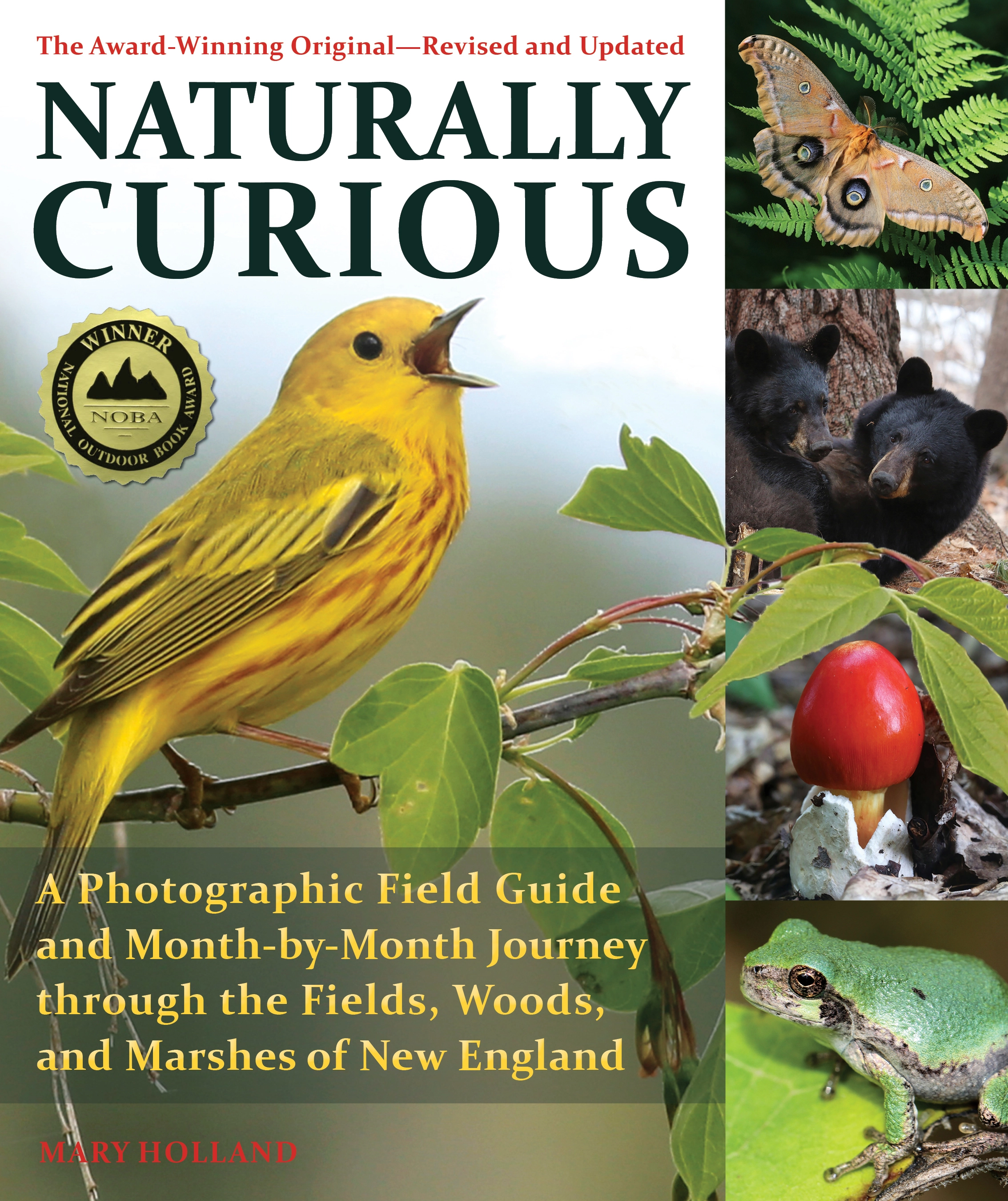

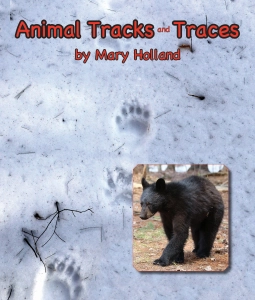

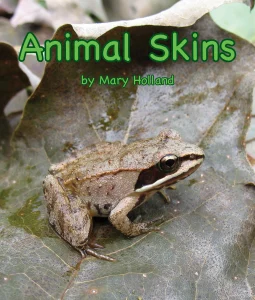


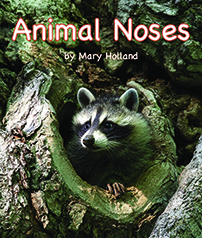





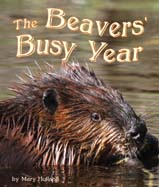
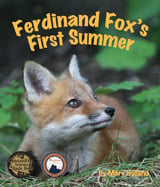


What Other Naturally Curious People Are Saying